Unraveling Common Misbeliefs in Risk Quantification
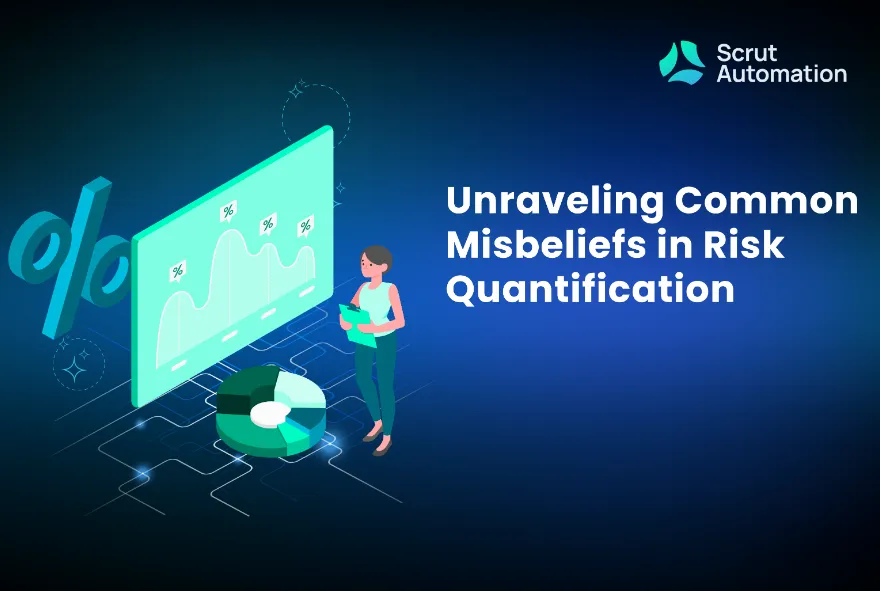
Did you know that Sonicwall reported there was a whopping 399% increase in cryptojacking attacks till mid-year 2023? Let’s look at trends of other types of attacks to understand the need for risk quantification in the organization.
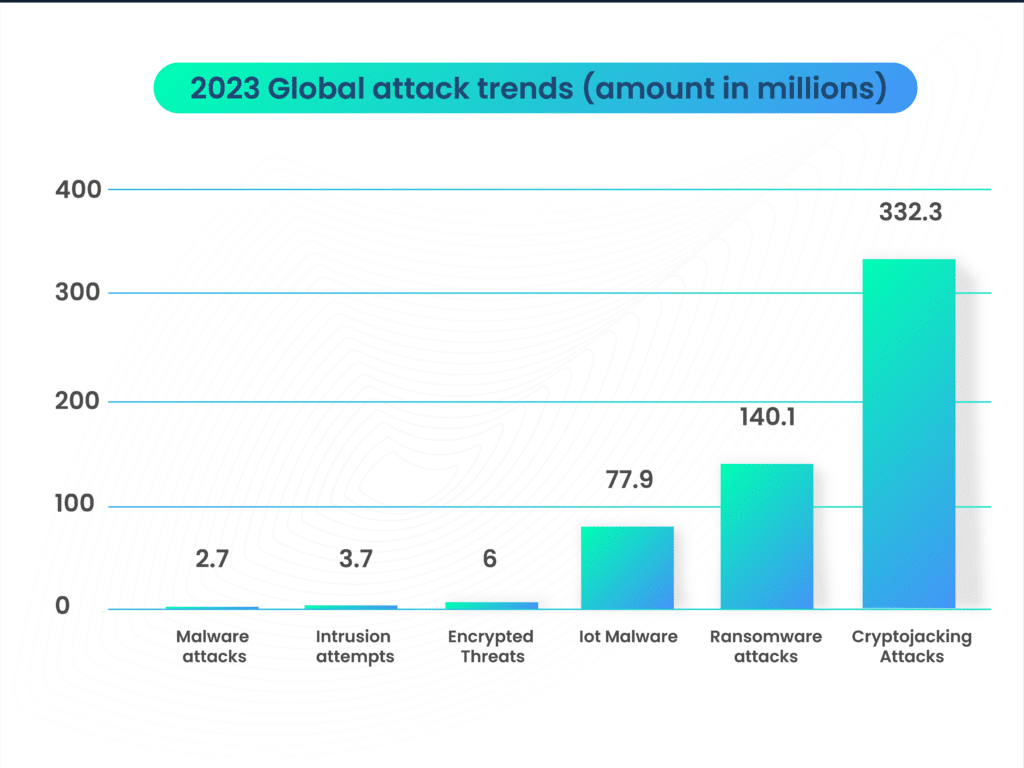
Risk quantification in cybersecurity and compliance has become a critical aspect of an organization’s security strategy. Risk quantification involves assessing and measuring the potential risks and vulnerabilities that can impact the confidentiality, integrity, and availability of sensitive information and systems.
Accurate cyber risk quantification helps organizations make informed decisions regarding their security investments, allocate resources effectively, and prioritize security measures based on their potential impact.
Despite its importance, cyber risk quantification often faces a barrage of myths and misconceptions that can hinder effective risk management. These myths can lead to misinformed decisions, inadequate resource allocation, and ineffective security measures. Dispelling these myths is crucial for fostering a better understanding of the role of risk quantification in cybersecurity and compliance.
The purpose of this blog is to address these prevalent myths and provide accurate, insightful information about risk quantification in cybersecurity and compliance.
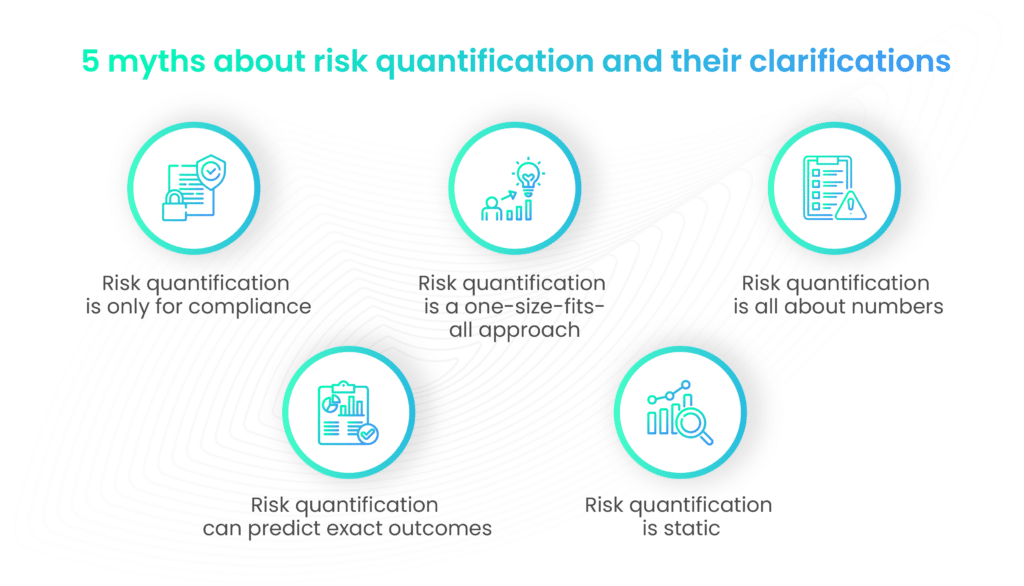
Myth #1: Risk quantification is only for compliance
One common misconception surrounding cyber risk quantification is the belief that it is primarily a compliance-driven activity. Many individuals and organizations mistakenly think that the sole purpose of quantifying risks is to meet regulatory requirements and pass compliance audits. While compliance is undoubtedly an important aspect of risk management, limiting risk quantification to compliance oversimplifies its true value and potential.
Clarification: Risk quantification’s broader applications beyond compliance:
Risk quantification extends far beyond compliance and offers numerous benefits to organizations across various domains. Here’s a clarification of its broader applications:
- Strategic decision-making: Risk quantification guides cybersecurity investments by assessing potential impacts and identifying critical areas.
- Resource allocation: Risk quantification determines efficient budget and effort allocation for mitigating specific threats beyond compliance.
- Security posture improvement: Quantifying risks enhances security by identifying vulnerabilities and enabling proactive risk reduction.
- Communication and awareness: Risk quantification fosters a common security language and a culture of awareness.
- Cyber insurance: Accurate cyber risk quantification informs insurance coverage and pricing for better terms.
- Continuous improvement: Ongoing risk quantification helps organizations adapt to evolving threats.
Real-world examples of how risk quantification benefits organizations beyond regulatory requirements
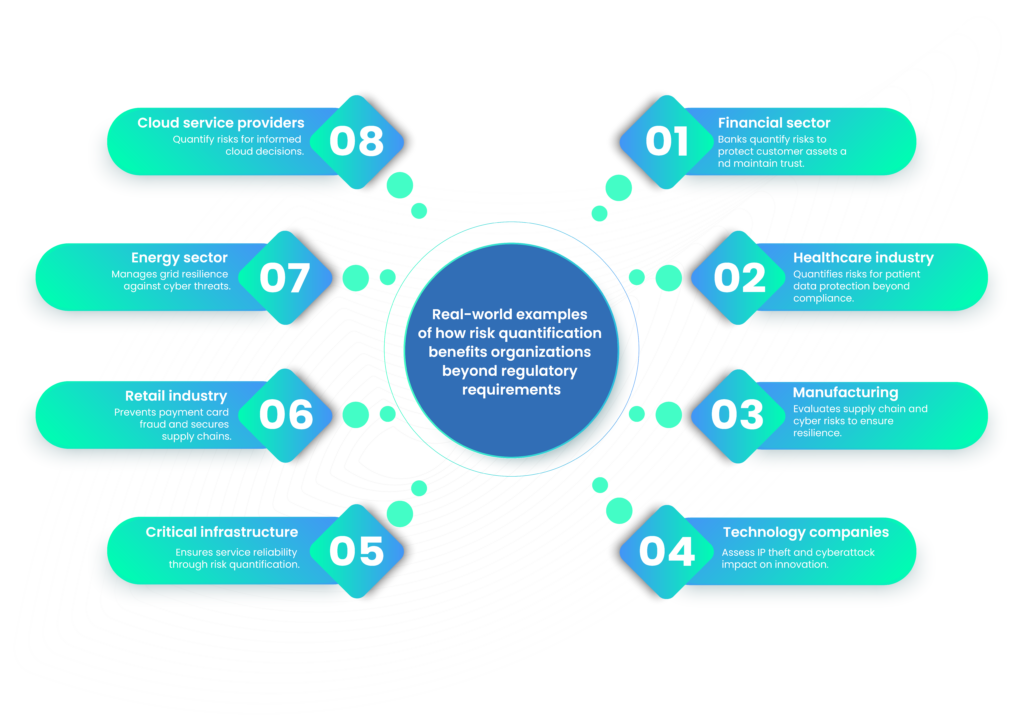
Myth #2: Risk quantification is a one-size-fits-all approach
The belief that risk quantification methods are uniform is not accurate. Risk quantification methods can vary significantly depending on various factors, including the nature of the risk, the industry, the organization’s goals, and the available data. Different organizations may adopt distinct approaches to assess and quantify risks based on their unique circumstances.
Uniformity in risk quantification methods is not feasible or desirable because what works for one organization may not be suitable for another. The key is to tailor the approach to align with an organization’s specific needs and risk landscape.
Clarification: Diversity of risk quantification approaches
There is a diverse range of risk quantification approaches due to the complexity and variability of risks in different contexts. Some common risk quantification methods include quantitative models, qualitative assessments, and semi-quantitative risk assessment methods.
The diversity in approaches allows organizations to choose the most appropriate method(s) based on the type of risk they are assessing, the available data, and their risk tolerance. It’s important to understand that the choice of risk quantification approach should align with an organization’s risk management goals and objectives.
Examples of tailored risk quantification strategies based on various factors

Apart from industry-specific risk quantification, there is also size-based risk quantification, threat-based risk quantification, and business-objective driven risk quantification to name a few.
Myth #3: Risk quantification is all about numbers
The misconception that risk quantification is solely a quantitative process involves the belief that risk assessment and management are exclusively driven by numbers and data. This view assumes that risks can only be understood and addressed through mathematical models, statistics, and quantitative metrics, neglecting the qualitative aspects of risk.
Clarification: Importance of qualitative factors in risk assessment
Qualitative factors play a crucial role in risk assessment because they provide context, insights, and a deeper understanding of risks that numbers alone cannot convey. Qualitative factors include elements such as the probability of a risk occurring, the potential impact on the organization, the relevance of the risk to strategic objectives, and the organization’s risk tolerance. These factors help in assessing the nature, significance, and relevance of risks to the organization.
How a balanced approach incorporating both quantitative and qualitative aspects is more effective

A balanced approach that incorporates both quantitative and qualitative aspects is more effective for several reasons:
- Comprehensive understanding: Qualitative factors help in framing the risk landscape and understanding the nuances of risks. This understanding guides the selection of appropriate quantitative models and metrics.
- Risk prioritization: Qualitative assessments help in prioritizing risks by considering their strategic importance, potential reputation damage, or regulatory implications, which may not be fully captured by quantitative metrics alone.
- Risk mitigation: Qualitative insights inform the development of risk mitigation strategies and contingency plans. It guides organizations in addressing not only the most quantifiable risks but also those that are strategically significant.
- Risk communication: Qualitative factors provide a narrative that aids in effective communication of risks to stakeholders. They help in conveying the implications and importance of risks in a way that resonates with decision-makers.
- Flexibility: Combining quantitative and qualitative approaches allows organizations to adapt to changing risk environments. In dynamic situations where data may be limited or uncertain, qualitative assessments can fill gaps and provide timely insights.
Myth #4: Risk quantification can predict exact outcomes
One common misconception in risk management is the expectation that risk quantification can predict exact outcomes with precision. This misconception stems from a misunderstanding of the nature of risk and probabilistic modeling. In reality, risk quantification provides estimates or probabilities of different outcomes rather than certainties.
Clarification: Risk quantification provides estimates, not guarantees
It’s important to understand that risk quantification is a tool for assessing and managing risks, not a crystal ball that can provide guarantees about future outcomes. When quantifying risks, professionals use various statistical methods, models, and historical data to estimate the likelihood and impact of different scenarios. These estimates help organizations make informed decisions and allocate resources effectively.
However, these estimates are subject to change as new information becomes available, and the actual outcomes may differ from the predicted ones. Risk quantification is a valuable process for making informed decisions and managing uncertainty, but it should not be mistaken for a surefire way to predict exact outcomes.
There are several reasons why expecting precision in risk quantification is unrealistic:
- Complex and dynamic nature of risks: Risks, especially in fields like finance, cybersecurity, and project management, are often influenced by a multitude of variables and factors. These factors can change rapidly, making it challenging to predict the exact outcome with absolute certainty.
- Uncertainty and incomplete information: In many cases, there is a lack of complete and reliable information, which introduces uncertainty into risk assessments. This uncertainty can lead to imprecise estimations.
- Human behavior: Human behavior and decision-making play a significant role in risk outcomes, and these behaviors can be unpredictable and irrational at times. Predicting human actions precisely is difficult.
- Black swan events: Certain rare and unpredictable events, known as “black swan events,” can have a profound impact on risk outcomes. These events are, by their nature, difficult to predict or quantify.
Myth #5: Risk quantification is static
One common myth in risk management is the belief that risk quantification is a one-time activity, often associated with the initial planning stages of a project or the assessment of a specific risk event. This misconception can be detrimental to an organization’s risk management efforts because it fails to recognize that risk is dynamic and constantly evolving.
Clarification: The need for continuous assessment
Risk is inherently dynamic and can change over time due to various factors. Here are some key reasons why risk is dynamic:
- Environmental changes: External factors, such as market conditions, regulatory changes, and geopolitical events, can significantly impact an organization’s risk profile. These changes may lead to new risks emerging or existing risks becoming more or less significant.
- Technological advances: Advances in technology can introduce new risks or alter the landscape of existing ones. For example, the adoption of new software or hardware may create cybersecurity vulnerabilities.
- Internal changes: Within an organization, changes in leadership, business strategy, or operations can influence risk. Mergers and acquisitions, restructuring, or changes in supply chain partners can introduce new risk factors.
- Risk interdependencies: Risks are interconnected, and the occurrence of one risk event can trigger or exacerbate others. These interdependencies make it essential to continually assess risks to understand their evolving relationships.
How risk quantification evolves to adapt to changing threats and vulnerabilities
Risk quantification is not a static process, and it must evolve to adapt to changing threats and vulnerabilities. In the following image, we depict some key mechanisms organizations can deploy as a part of risk quantification to keep up with evolving threats.
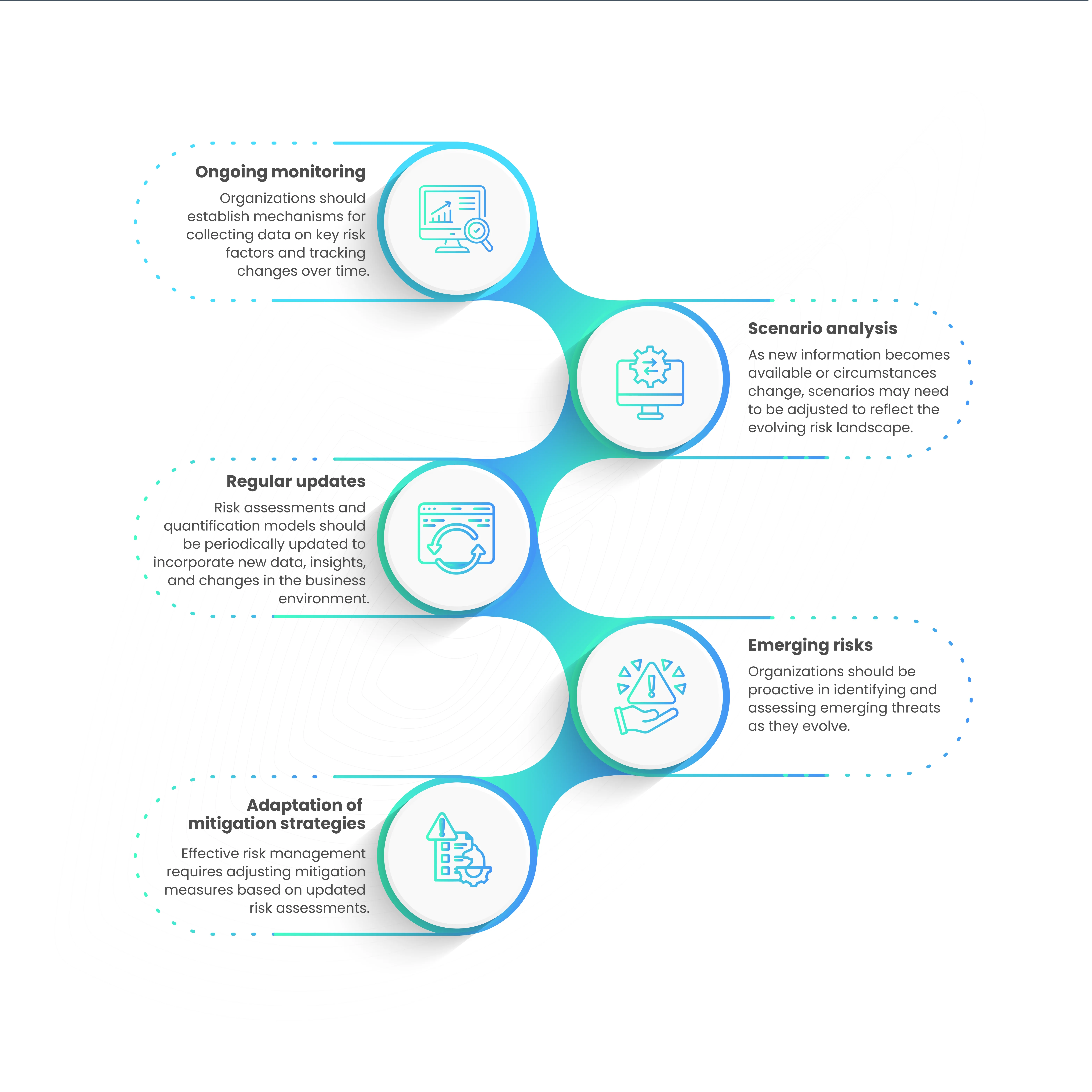
Winding up
In conclusion, cybersecurity risk quantification is vital in the face of rising threats like cryptojacking and various cyberattacks. We’ve debunked five myths:
- It’s not just for compliance; it aids strategic decisions.
- There’s no one-size-fits-all approach; tailor it to your needs.
- It’s not just about numbers; qualitative factors matter.
- It provides estimates, not certainties, due to evolving risks.
- It’s not a one-time activity; it must adapt to changing threats.
Embrace these insights for a resilient cybersecurity strategy that safeguards your organization in our dynamic digital landscape. Take control of your organization’s risk management today with Scrut! Don’t leave your cybersecurity to chance—empower your team with accurate risk quantification and proactive risk mitigation. Get started now and safeguard your future.
FAQs
1. What is risk quantification in cybersecurity, and why is it important?
Risk quantification in cybersecurity is the process of assessing and measuring potential risks and vulnerabilities that can impact the confidentiality, integrity, and availability of sensitive information and systems. It’s crucial because it helps organizations make informed decisions, allocate resources effectively, and prioritize security measures based on potential impact.
2. What are the limitations of risk quantification in predicting cybersecurity risks accurately?
Several limitations include the rapidly evolving threat landscape, the lack of comprehensive data, human error, and behavior, the discovery of new vulnerabilities, and the influence of geopolitical and economic factors. These factors make precise predictions challenging.
3. What industries can benefit from implementing cyber risk quantification?
Virtually all industries can benefit from cyber risk quantification. Examples include financial services, healthcare, manufacturing, technology, critical infrastructure, retail, energy, cloud service providers, and more.


















